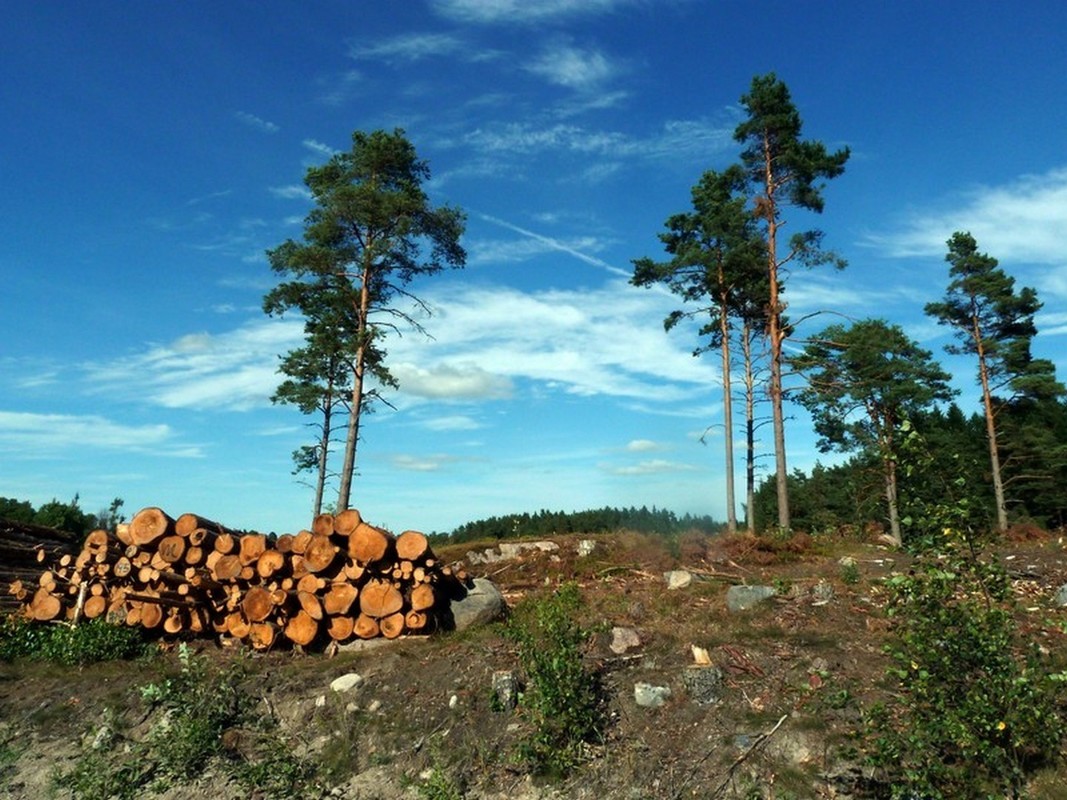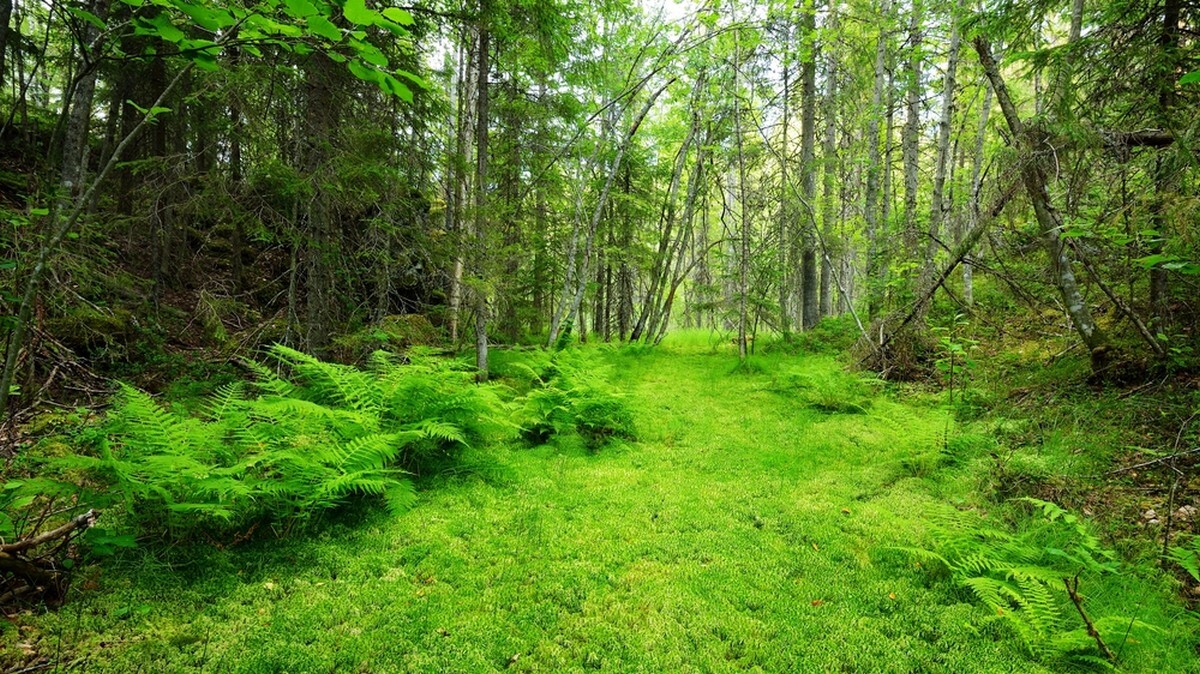5.4 Humans and forests
"Finland without forests would be like a bear without fur", wrote the 19th century Finnish writer Sakari Topelius. In a couple of thousand years preceeding Topelius's words, the Finns had developed into a people who harnessed the region's forests for energy, construction and economic gain. During the 19th century, Finns grew fearful that their forests would gradually disappear as a result of increased forestry. A forest law was put into place. The law states that a cut forest must be replaced with a new forest by planting saplings or by making sure that some trees are left standing.

New saplings are planted after a forest has been clear-cut.
The commercial forest cycle begins when a forest is cut. After this, saplings are planted in the clearing. Saplings are taken care of by way of improvement felling. Finally, the mature trees are cut down once again. Commercial forests rarely grow over 80 years old before most of their trees are cut and sold.

A wintry commercial forest near Kuopio.
The plant species of a forest change over time. This process is known as succession. In natural conditions, the succession of a Finnish forest from a clearing to an old-growth forest takes approximately between 100 and 200 years. Old-growth forests accommodate the largest number of rare, endangered species in Finland, which is why they should be protected.

A forest in its natural condition. A bog has formed where an old brook was once found.

New saplings are planted after a forest has been clear-cut.
The commercial forest cycle begins when a forest is cut. After this, saplings are planted in the clearing. Saplings are taken care of by way of improvement felling. Finally, the mature trees are cut down once again. Commercial forests rarely grow over 80 years old before most of their trees are cut and sold.

A wintry commercial forest near Kuopio.
The plant species of a forest change over time. This process is known as succession. In natural conditions, the succession of a Finnish forest from a clearing to an old-growth forest takes approximately between 100 and 200 years. Old-growth forests accommodate the largest number of rare, endangered species in Finland, which is why they should be protected.

A forest in its natural condition. A bog has formed where an old brook was once found.